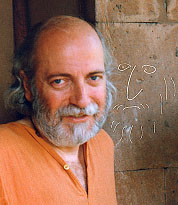
Levon Abrahamian
Born in 1947, was educated at the Yerevan State University (Dept. Physics, M.Sc., 1970) and the Institute of Ethnography, Academy of Sciences of the USSR, in Moscow (Cultural Anthropology, Ph.D., 1978). Since 1978 Abrahamian works as a researcher at the Institute of Archaeology and Ethnography, National Academy of Sciences of Armenia. Presently he heads the Department of Contemporary Anthropological Studies at the same Institute. In 2006 he was elected Corresponding Member of the National Academy of Sciences of Armenia. Since 1990 Abrahamian teaches different courses of Cultural/Social Anthropology at the Yerevan State University. He has taught also at the University of Pittsburgh (1994), University of California at Berkeley (William Saroyan Professor of Armenian Studies, 1997), and Columbia University (2001). Areas of interest: Armenian Traditional and Contemporary Anthropology, Comparative Mythology, Political Anthropology, and Anthropology of Art. Abrahamian is author of more than 150 publications on various aspects of cultural anthropology and art criticism including four books: "Primitive Festival and Mythology" (Yerevan: Acad. Sci. of Arm. SSR Press, 1983, in Russian); "Armenian Folk Arts, Culture, and Identity" (co-editor: Nancy Sweezy. Bloomington and Indianapolis: Indiana University Press, 2001); "Conversations Near a Tree" (Moscow: Languages of Slavonic Cultures, 2005, in Russian); "Armenian Identity in a Changing World" (Costa Mesa, CA: Mazda , 2006).